Try as they may, Tokyo is one of those places outsiders will probably never fully understand. Lovers of the city will visit frequently, discovering a different version each time. A little like trying to fall back to sleep and repeat a dream, only to find a different, yet just as magical one in its place.
The most curious thing about Tokyo is how it runs, like a well-oiled machine, despite its astonishing magnitude. The streets are clean, the people are mindful of one another, it is safe and convenient––trains slide into the station and come to a soft stop just as the second hand clicks into place. The inner-city architecture comprises soaring glassy sky scrapers with soft grey blocks of concrete, and deep waterways are lined with trees which burst into candy-colored canopies in the fleeting springtime. Farther afield, Tokyo’s smaller districts are peppered with greenery, with hints of the past in mahogany clay tiled roofs (kawara) and hushed temples.
Shrinking between gleaming tower blocks are Tokyo’s yokocho alleyways, found behind fluttering noren curtains. People sit on beer crates, smoking and knocking back cold sake. Gurgling tanks are filled with ebi, while thorny sea urchins glint up from open boxes. Orange and red lanterns wave above wooden doorways and old signs hang on wires, flickering like old televisions. Smoke fills the air, perfumed with the scent of sizzling yakitori and huge cauldrons of pork bone broth. Tiny bars are lined with umeshu (plum wine) boxes, making way for guests to fill every inch.
One way of getting a sense of Tokyo’s mind-bending size is by riding the subway. Letting the doors snap shut behind you, you can hurtle smoothly from one corner of the city to another, standing for an hour without covering even a fragment of its whole. Underneath the thirteen million feet that pace Tokyo’s pavements, you can come to understand something of the city and the people that inhabit its many areas. Sharp-suited businessmen rub shoulders with kawaii girls in pink ruffled dresses, bloomers and bows. Young couples in matching culottes and blue hair stand beside groups of school children in corduroy baker boy hats tapping at smartphones, or give up their seats to elderly people who observe them with a puzzled smile. The speakers announce each stop, and an electronic melody jingles as the steely doors close behind another wave of characters.
It was while standing in a subway carriage, grasping on to the rubber hand loops as the train lurched along the yellow Ginza Line, that chef Ricardo Zarate told me about his family. “I’m one of thirteen. So my mother was always just cooking, cooking, cooking,” he grins. “I used to watch her manage all of this food. We’d all eat together, just real food that tasted like home.” This home was Lima, Peru, the country Zarate left in 1994 and has taken with him wherever he has been since. “I remember the first meal I made,” he continued. “I was eight years old. It was a really sweet rice pudding with milk and chocolate. I will never forget that feeling of feeding my family, and giving them something that they loved. It was the moment I decided to become a cook. When you make another human being happy, you remind yourself that you exist,” he says. “Cooking is how I have connected to the world ever since.”

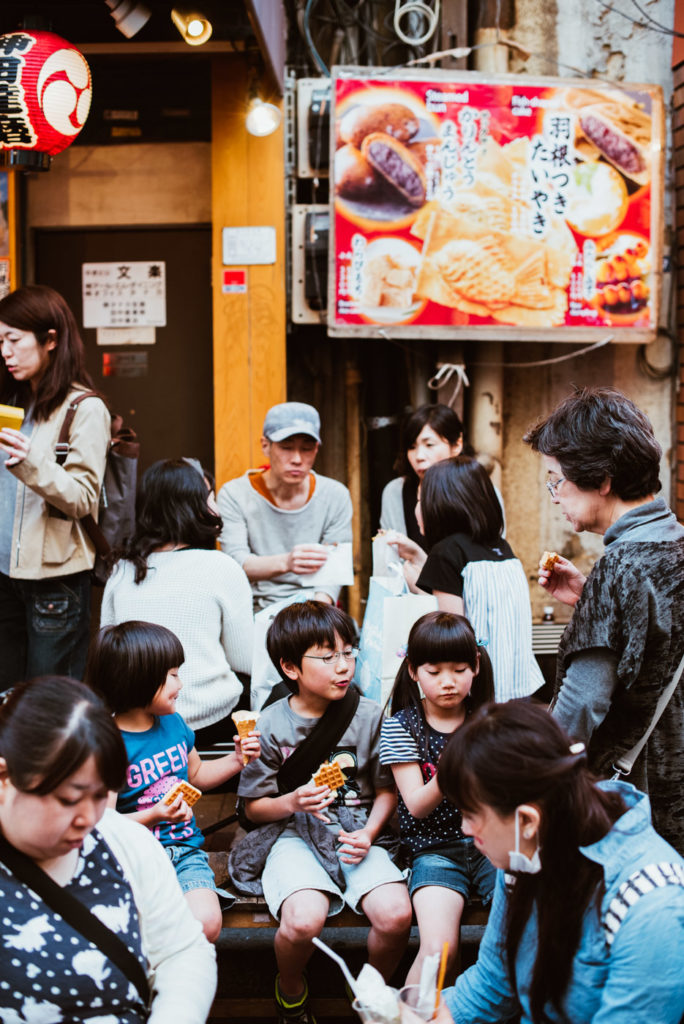
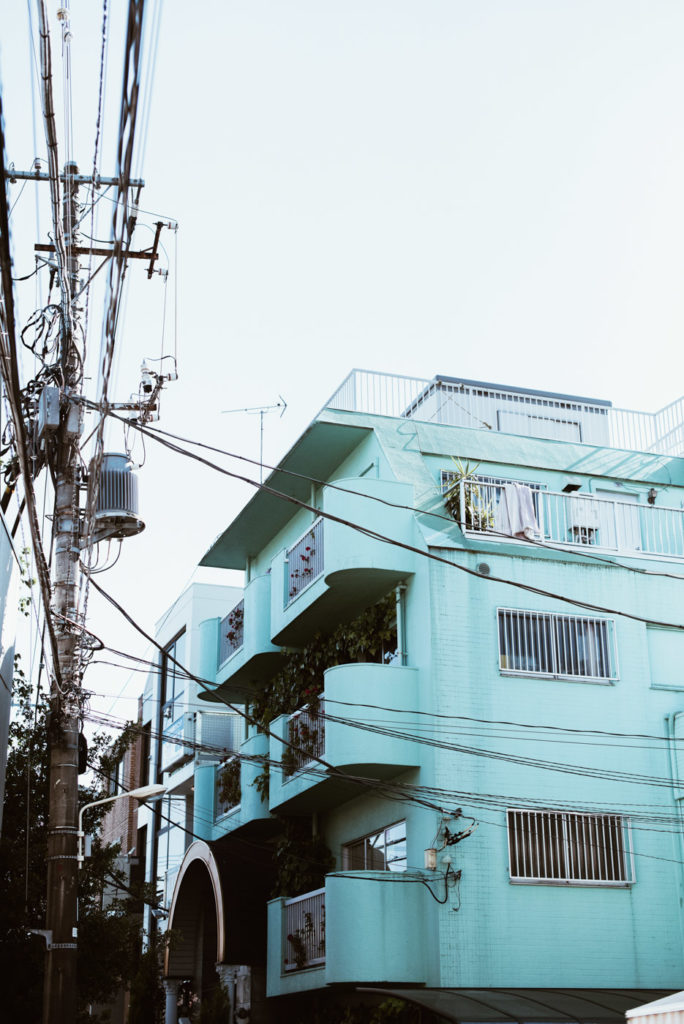
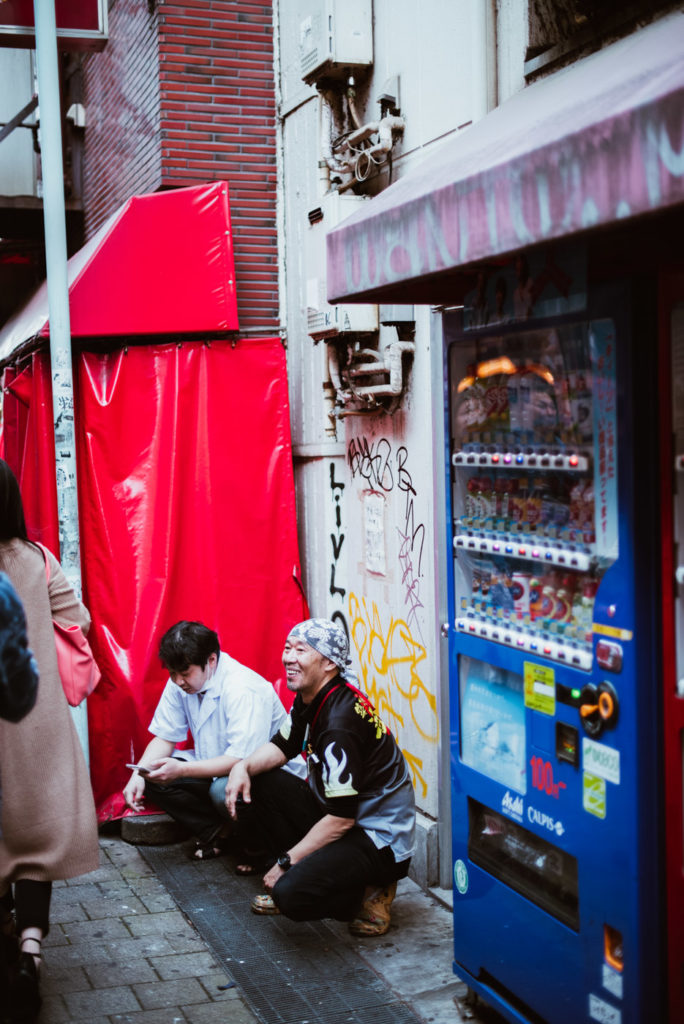

A Turning Point; A Lifelong Connection
We first saw chef Zarate before he saw us. We had arranged to meet in Asakusa, a district of Taitō in northeastern Tokyo. It is famous for the Sensō-ji, an ancient Buddhist temple of red and gold, like a giant lantern. It is approached via the Nakamise, a long stretch of market stalls and shops leading up to the gates. Our gaze was transfixed upon a line of young women draped in stiff silk kimonos, their jet-black hair twisted up with carved sticks. They were queuing patiently for bean curd.
Like many of Tokyo’s greatest food establishments, Asakusa Menchi sells just one thing; menchi-katsu, deep fried minced pork and beef with sweet diced onion. We ordered a couple from the old woman operating the stall, who lifted each one from the bubbling oil and slipped it into a brown paper bag. We stood back from the crowds, breaking apart the infernal batter while the juices rushed out. Zarate laughed as our eyes widened, and we rushed into a conversation about Tokyo. The noise, the colors, the food. He told me that he had dreamed of coming here all his life.
So why now? Zarate was about to open his new West Hollywood restaurant, Rosaliné. “I came to Tokyo to be inspired,” he says. “To understand Japan. I eat, and I start to think. Like that, for example.” He points to the last of the greasy crumbs in my hand. “I ate that and I started thinking about creating a breakfast dish with katsu pork. Really juicy and crunchy. Maybe a brunch sandwich with a fried egg on top. With dried chili. Imagine that and a pisco sour on a Sunday morning!”
As it turns out, Peruvian and Japanese cuisines are closely linked. An influx of Japanese immigrants to Peru at the turn of the 20th century brought new flavors to the table. Japanese diaspora turned to Peruvian produce in their cooking. They used citrus to preserve fresh fish, and bright Amazonian fruits were introduced to savory recipes. These experiments in cross-continental cooking brought the world dishes like ceviche, originally a spin on classic sashimi. “Japanese cuisine was not very successful in Peru. So the Japanese would take influences from Peruvian cuisine and merge it with their food. This is the kind of cooking that I have the deepest connection with,” Zarate tells us. The gentle marriage of these two cuisines inform Rosaliné, the Peruvian restaurant named after his mother that marked his return to the Hollywood food scene last summer after years of silence. And this time, he’s doing it his way. “It’s taken me over twenty years to understand myself,” he continues, “To realize that I only want to cook things in a creative, fulfilling way. That’s why this trip is so meaningful to me. It’s the beginning of the most important project of my life.”
Of course, we knew the Ricardo Zarate story already. We knew about his rise to culinary stardom in Los Angeles, the city that named him “the godfather of Peruvian food.” It began with Mo-Chica, a small restaurant in the indoor Mercado La Paloma that opened in 2009. A larger, more central space for Mo-Chica came next, followed by two more spots; Paiche and Picca. He also opened up Blue Tavern in Santa Barbara.
Zarate’s menus showcased the kaleidoscopic flavors of Peru, a cuisine that had gone largely unnoticed until his arrival on the scene. His cooking brought him accolades, from four James Beard nominations to a Food & Wine ‘Best New Chef’ award in 2011. LA restaurant critic Jonathan Gold praised him, and he became synonymous with Peruvian food in the city. And then. Within months of each other, Mo-Chica and Paiche had shut their doors, and Zarate turned his back on Blue Tavern and Picca. Zarate explained that this came down to an overload of pressure from investors, fans and critics. Now the chef was waiting to explode back onto the LA food map in a flurry of colors and flavors. He arrived in Tokyo with a vague idea of Rosaliné’s menu, the structure, the faint outlines. But he was completely open to inspiration. Which made him pretty fun to eat with.
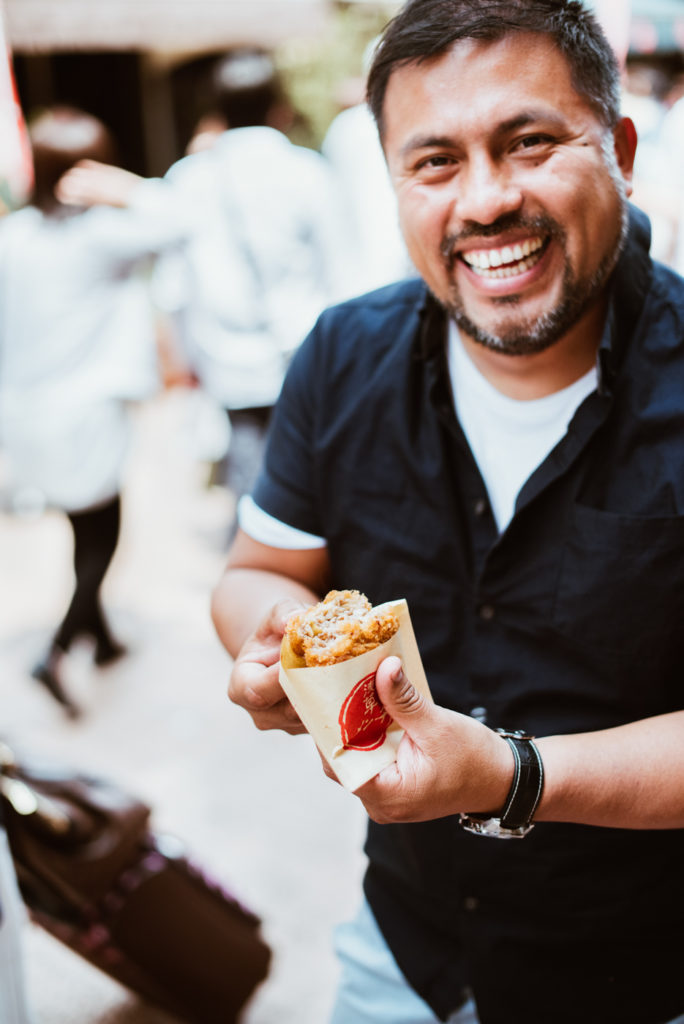
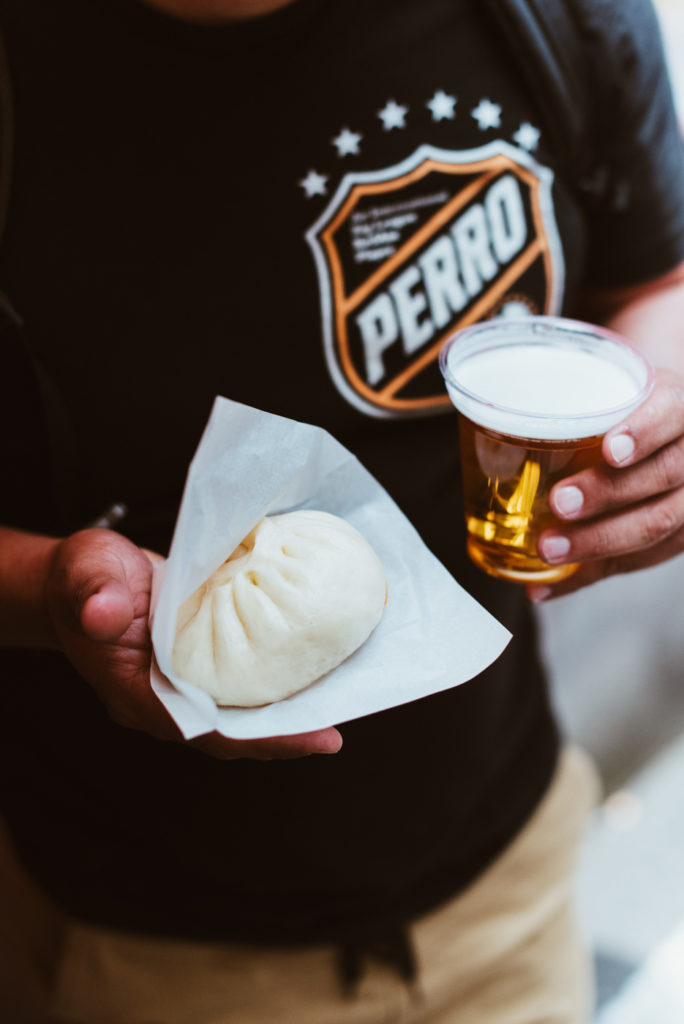
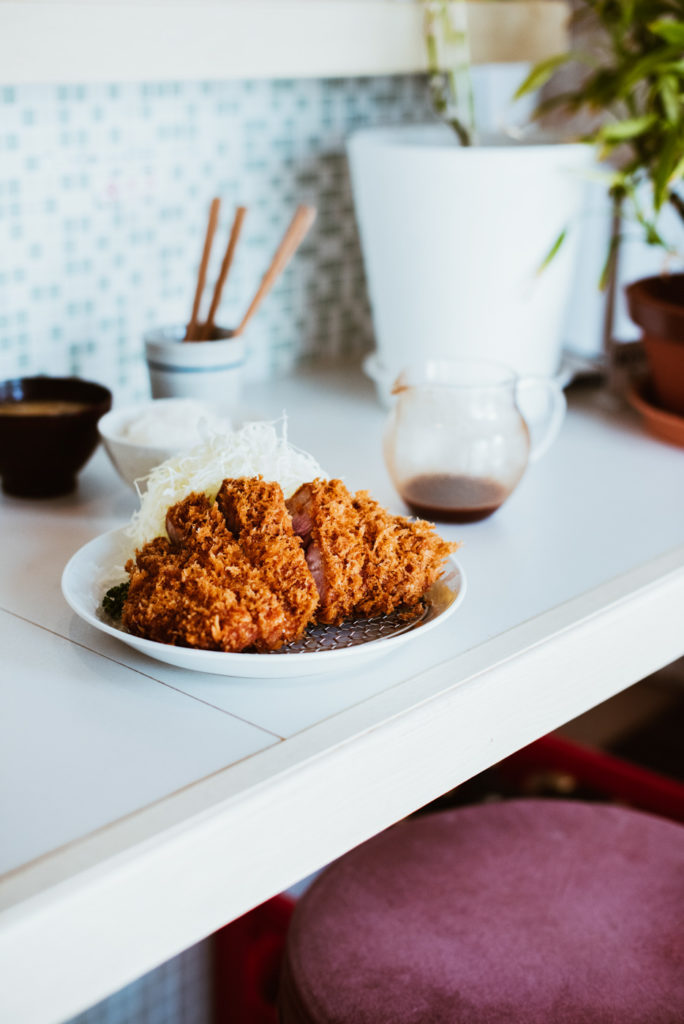
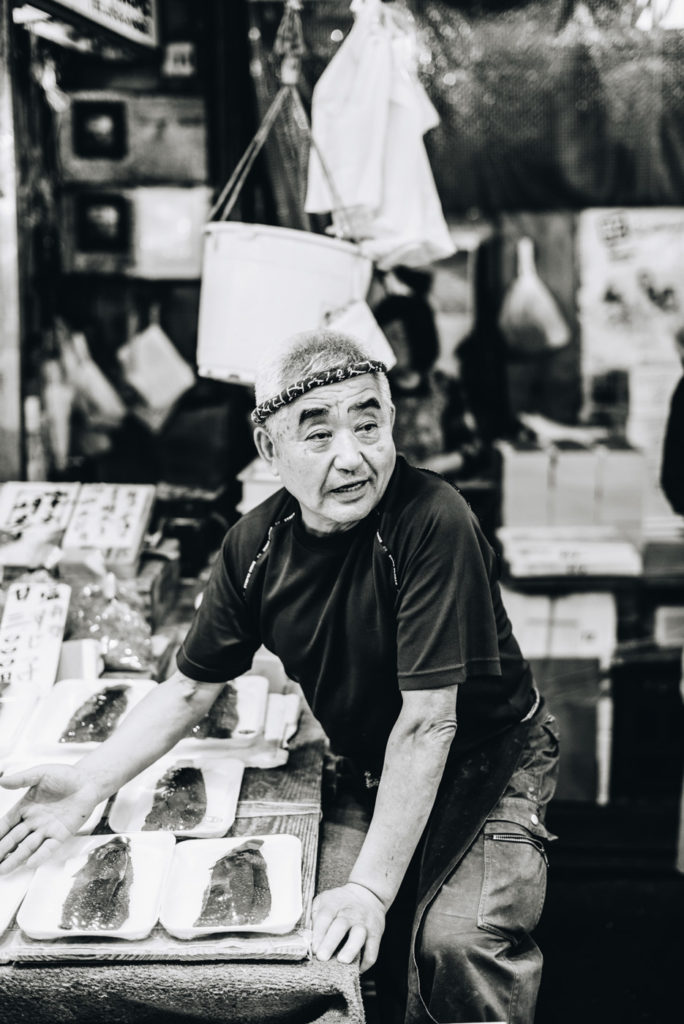
Inspiration
After that first meeting, we wandered from the crawling market stalls of Nakamise up to Kappabashi, a long stretch of wholesale shops selling piles of handmade pots, delicate teacups, glossy wooden ramen spoons and deep bowls with aquamarine cracks running through them. Zarate slipped into a knife shop that looked like a fine jewelry store, where a man in the window was hunched over a blade, carving letters into the silver. Next, we found ourselves in an orderly queue outside the door of Maruyama Kippei, a local tonkatsu restaurant. A sign on the door read in Japanese “Please stand behind the yellow line. If you don’t like pork fat, you’re in the wrong place.” Once in, we ordered cold beers and tucked into sliced pork cutlets coated in thick golden breadcrumbs, served with a little jug of dark caramel-colored sauce and a towering nest of cool white cabbage.
Zarate craned his neck to watch the man in whites coat the meat in layers of flour, egg and panko bread crumbs, handling it like a luxurious piece of silk. “Japanese people are strict with themselves,” he remarked. “They are respectful and calm. Peruvians are very informal and relaxed. And loud! You can imagine that clash when Japanese people first arrived in Peru. I think Japanese culture can teach you about control.” He slammed down the rest of his beer and grinned again.
Leading us through Tokyo was Keiichi Kurobe, a friend of Zarate’s whose family still remain there. A few days in to the trip, he invited us to his grandmother’s home in Itabashi, where Zarate jumped at the chance to cook for his family––a Peruvian feast using Japanese produce. We headed to an indoor market nearby, where Zarate lost himself among the lurid shelves; pickled garlic, fuse packed octopus, noodles wrapped up like gifts. We boarded the bus to Keiichi’s district, which reminded me of Kyoto, with its wood-paneled houses and billowing trees. We removed our shoes and stepped inside, greeted by Keiichi’s grandmother. His mother and father handed us beers, while his uncle and cousins filed in. Three round trays of sushi lay in wait, a gift from Keiichi’s grandmother uncomfortable at the thought of not offering us any food herself.
Zarate remained in the tiny kitchen for a couple of hours, as the rest of us gathered together and drank on the spotless tatami floor. “With the right ingredient and the right technique, magic can happen,” he said. “But the first part is the most important. Planting. Growing. Eating. The circle needs to be perfect.” He gently unwrapped a dark red piece of tuna. “The Japanese are the masters of that. But I think we can mimic it in LA. I believe in it. It comes down to caring where your produce comes from.”
Slowly, the low table filled with Zarate’s food, starting with a soft, milky ceviche with red snapper, and aji (Spanish mackerel) cured with Japanese lemons. “Keiichi’s family have never encountered Peruvian flavor, so I didn’t want to make it too punchy. I toned it down a little,” he explained. This was followed by a toro sashimi, the oily belly of bluefin tuna garnished with sesame oil, ginger and tiny strands of white onion, and creamy chicken in a Peruvian bread sauce with walnuts, parmesan and contraband peppers that Zarate had snuck into his luggage. “I added some eggs into this, too,” he said, as Keiichi’s family nodded in appreciation.
Zarate came and sat down beside me. “Look at what food does,” he says. “Eating together creates a beautiful connection. Because when you eat with someone, on a very animalistic level there must be trust. In times of no diplomacy, the only way to show trust was to share food. We are all the same. We have so much to learn from each other. Food is one way to do that.”
The next day, we headed to Ameya-Yokochō, an open-air market. Market stall owners barked, groups of teenagers dipped in to colossal games arcades, children snacked on wedges of watermelon. Every corner of the place seemed full of people eating; shucking and slurping oysters, picking at okonomiyaki (savory pancakes), tearing apart cloudy baozi dumplings, sucking up yakisoba and refilling each other’s glasses with sake.
It was 4pm. It was not lunchtime, it was not dinnertime, so what was it? “It’s just whatever!”, Keiichi said. We drank cheap beer and picked up a snow crab manju (bun) and a sea urchin steamed bun. “This is just incredible,” Zarate said as he tore into it. “It’s the simplicity that is inspiring. A lot of Peruvian food is highly flavored and spiced. I want to start thinking about stripping it back. How can I bring that beautiful Japanese simplicity to the Rosaliné menu?” He looked around at the pluming smoke and crowds. I want to break that formality of Los Angeles. I want it to be more like Lima in there. And maybe a little like Tokyo!”
Tokyo’s chaos remains remarkably ordered. Yet all of this goes out of the window at Tsukiji Fish Market, the seafood mecca. We rose in the early hours to catch the market at its unruliest. Inside, fishermen in rubber boots race by on scooters, boisterous traders hack away at gigantic bluefin tuna, exposing their purple flesh. Traders scrape away mosaic-like scales with a brush, or use oyster shells to peel the flesh from fresh fish for sashimi. Baby eels thrash around in buckets, while slippery halibut eyes glint up at you like onyx. Ice melts on the ground, and the air smells of drying sea water. It is a theatre of guts and gills. We made our way through the surrounding streets, a maze of hole-in-the-wall sushi restaurants serving fish from the market. Zarate held a piece of toro between two chopsticks explaining that fish fat should be served below body temperature so that it melts in the mouth. We ate roe that looked like beads of amber, and sweet shrimp with pickled ginger as morning slipped into afternoon.
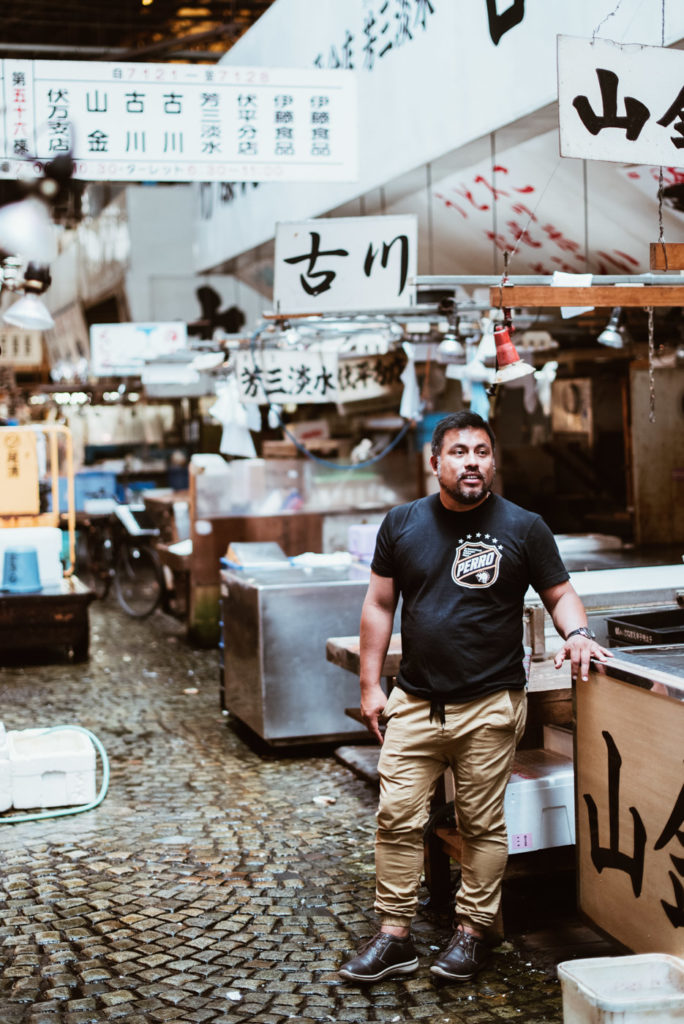
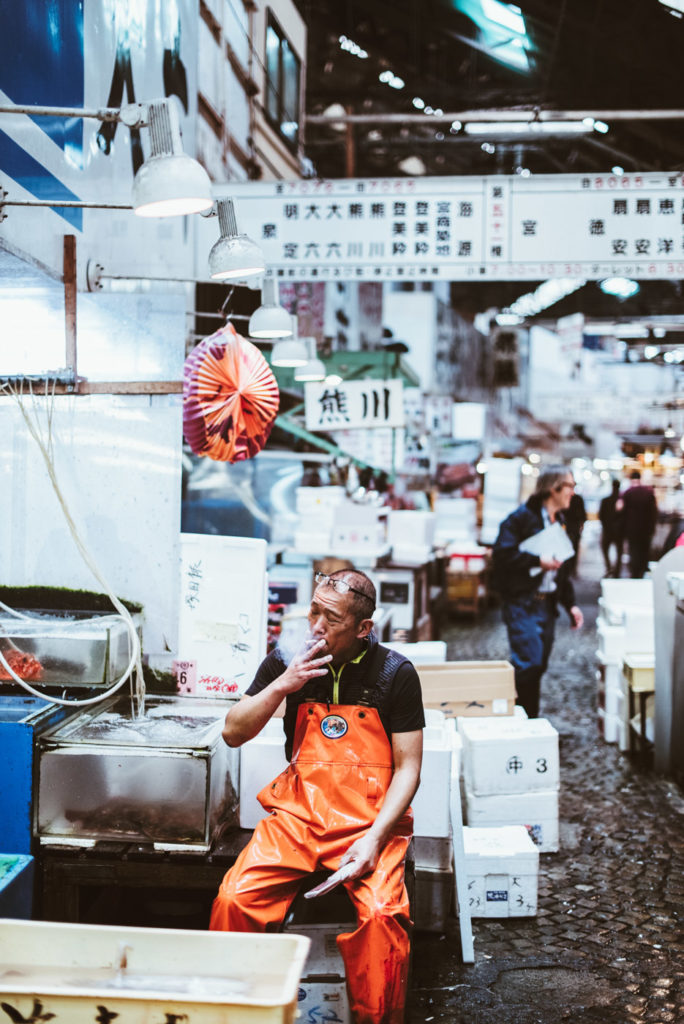

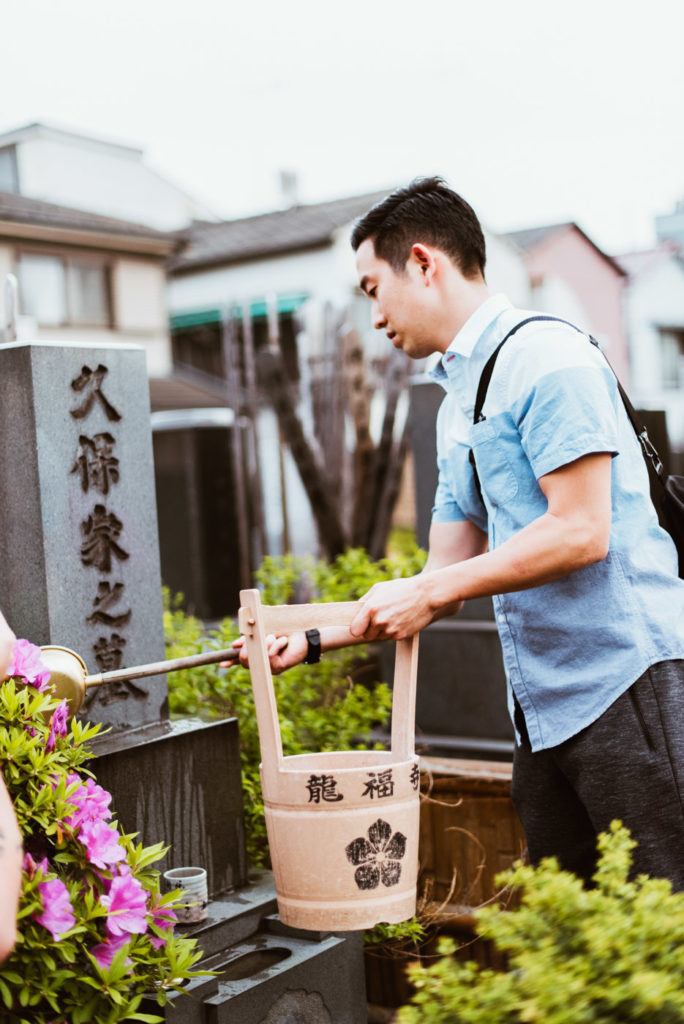
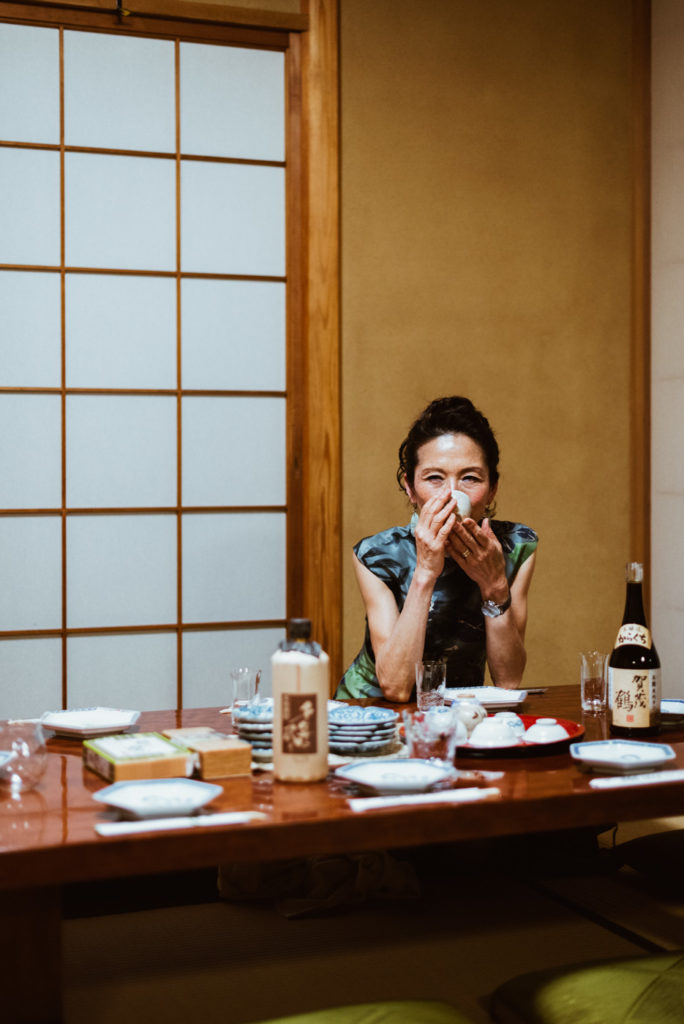
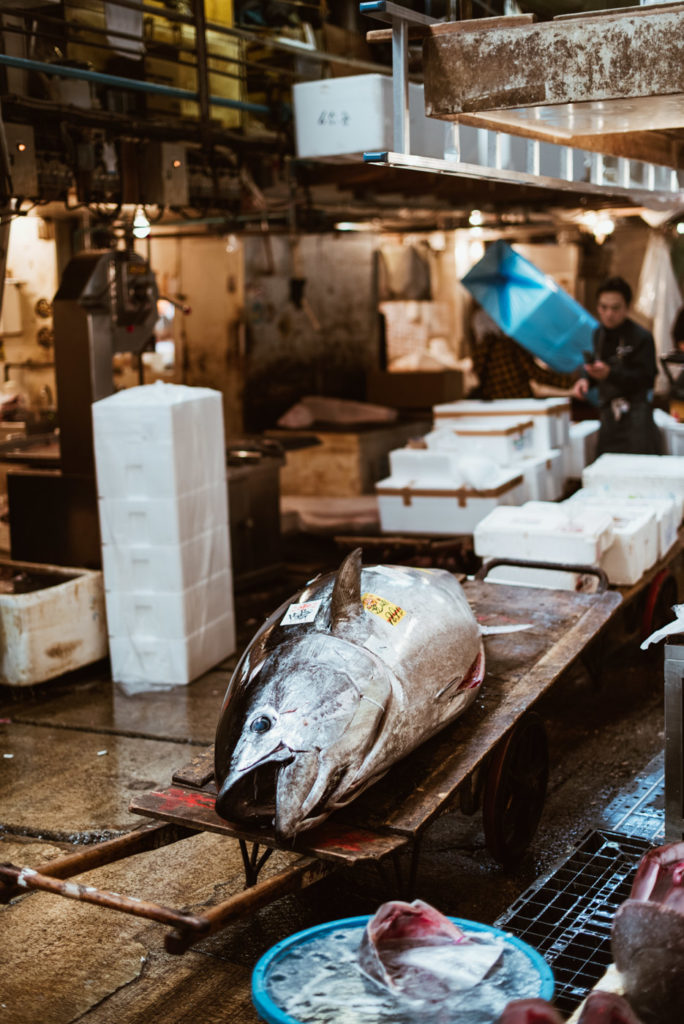
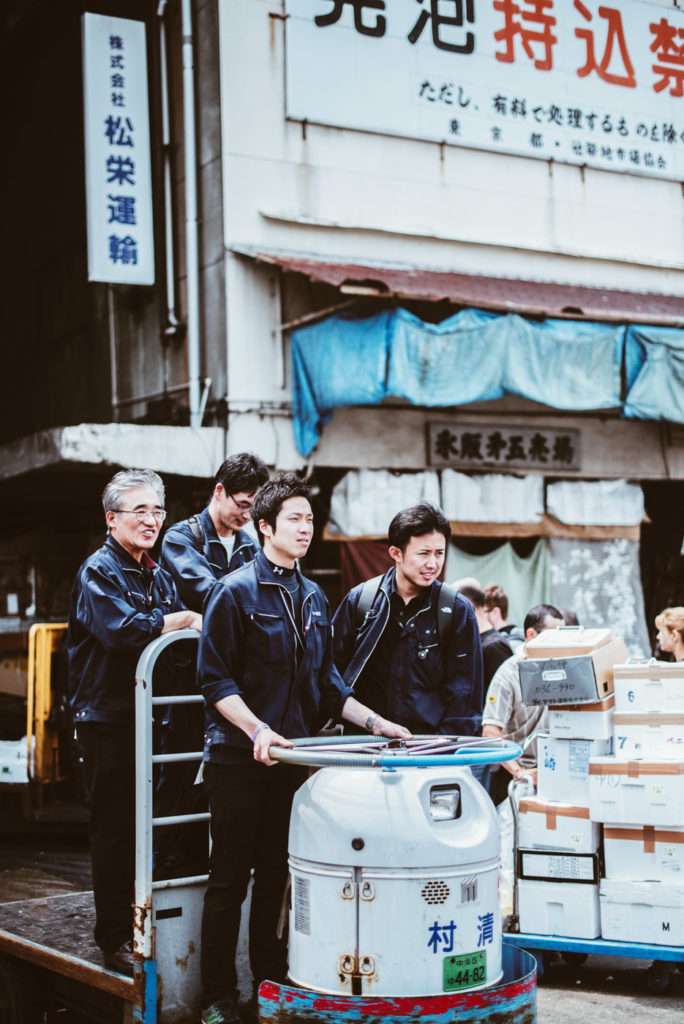
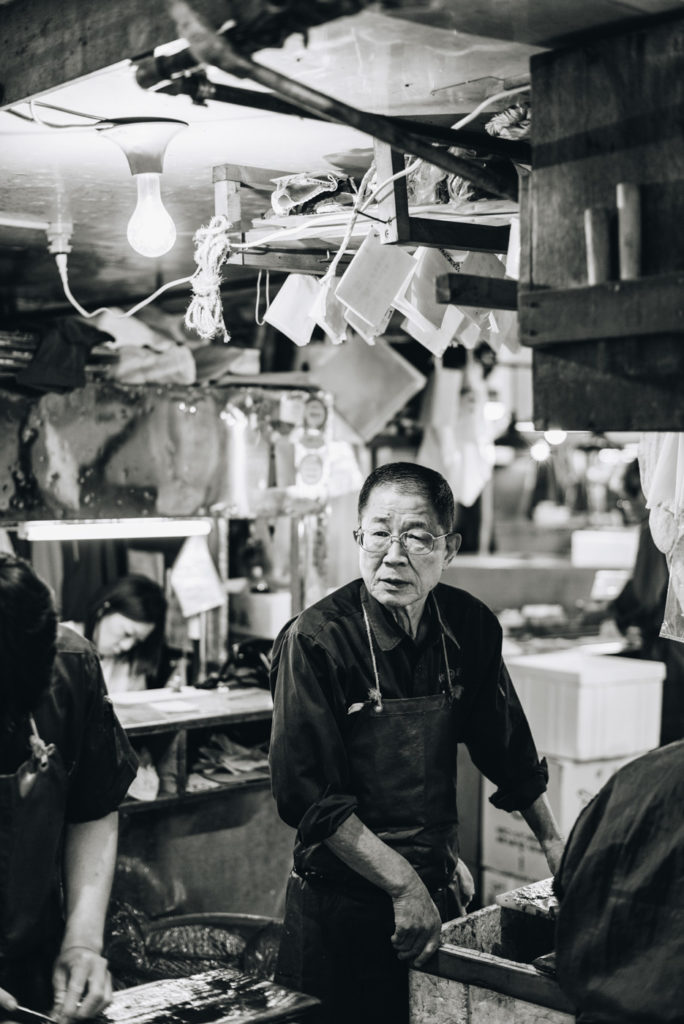
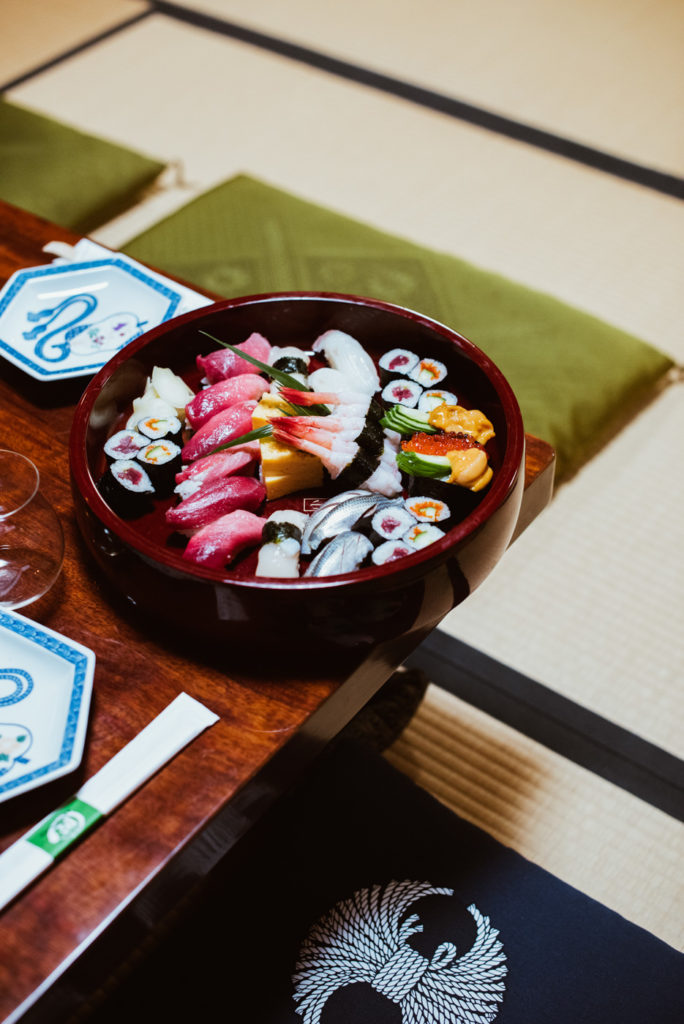
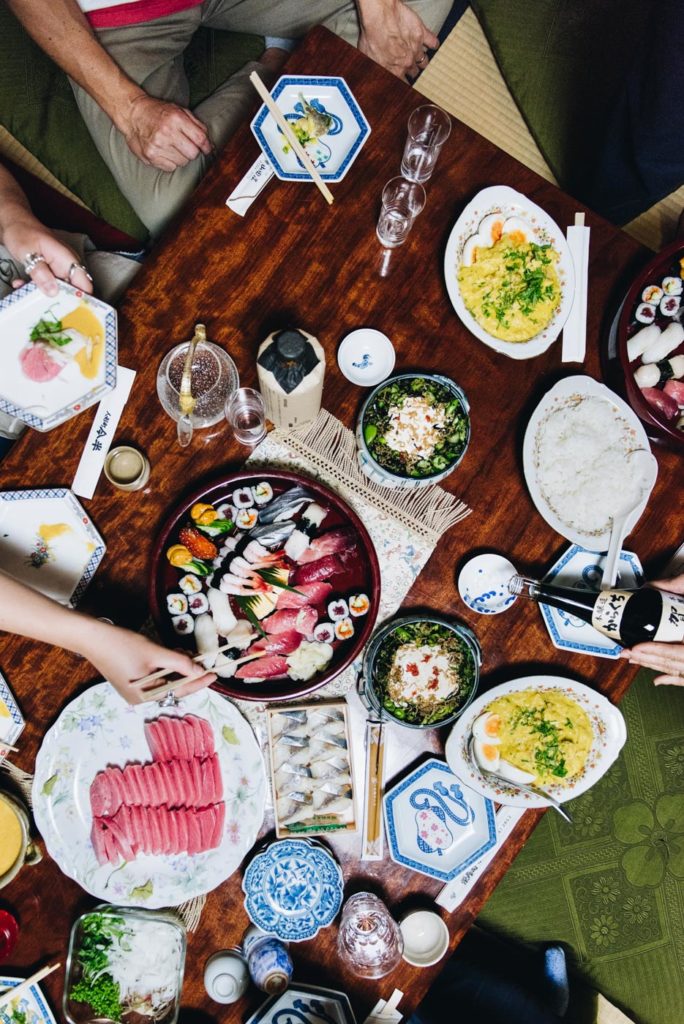
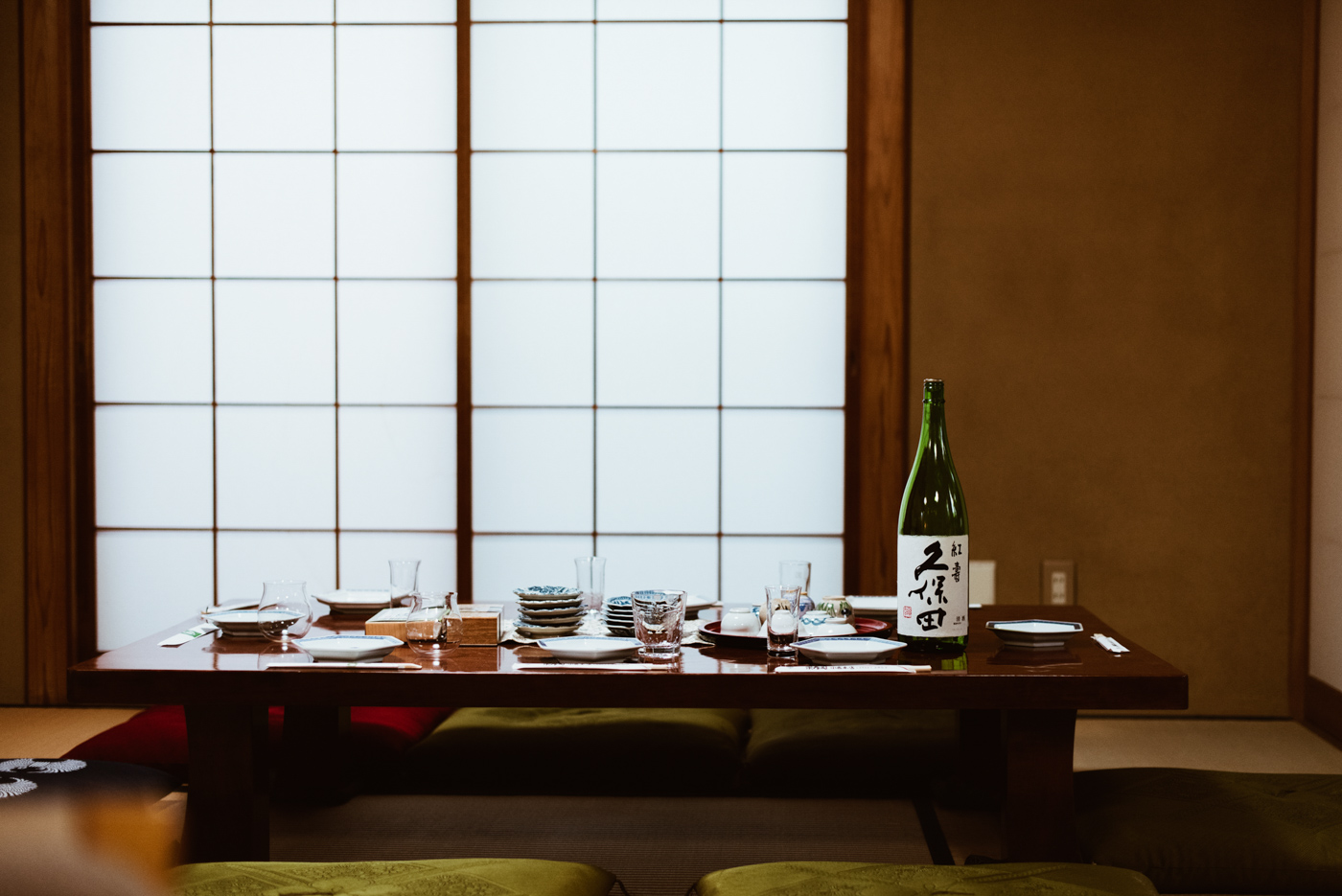
Our time with Ricardo Zarate came to an end over Japanese whiskey in a low-lit bar somewhere near a giant Louise Bourgeois spider sculpture; an aged Yamazaki in a paper-thin crystal glass. I was suddenly aware of what a precious time this was for Zarate, toeing the line of new beginnings. He was to go back to LA, the same city that saw the rise and fall of his restaurant empire, to try again. “My focus at the moment is to bring all of this together. The care, the love, the taste, the culture,” he said, as we discussed his return to the kitchen. “I want to create Peruvian cuisine with Japanese influence: the respect for ingredients, pared back flavors and care that I’ve witnessed here.”
“I am lucky that I can do something that brings me joy. And more importantly, can bring others joy. It hasn’t always been easy, but like I said before, cooking is my way of interacting. If you don’t interact with others, how can you ever connect with the world?”
——
This story was made possible with the help and trip sponsorship of Culinary Lab, a restaurant and hospitality group based in Los Angeles.






Our comments section is for members only.
Join today to gain exclusive access.